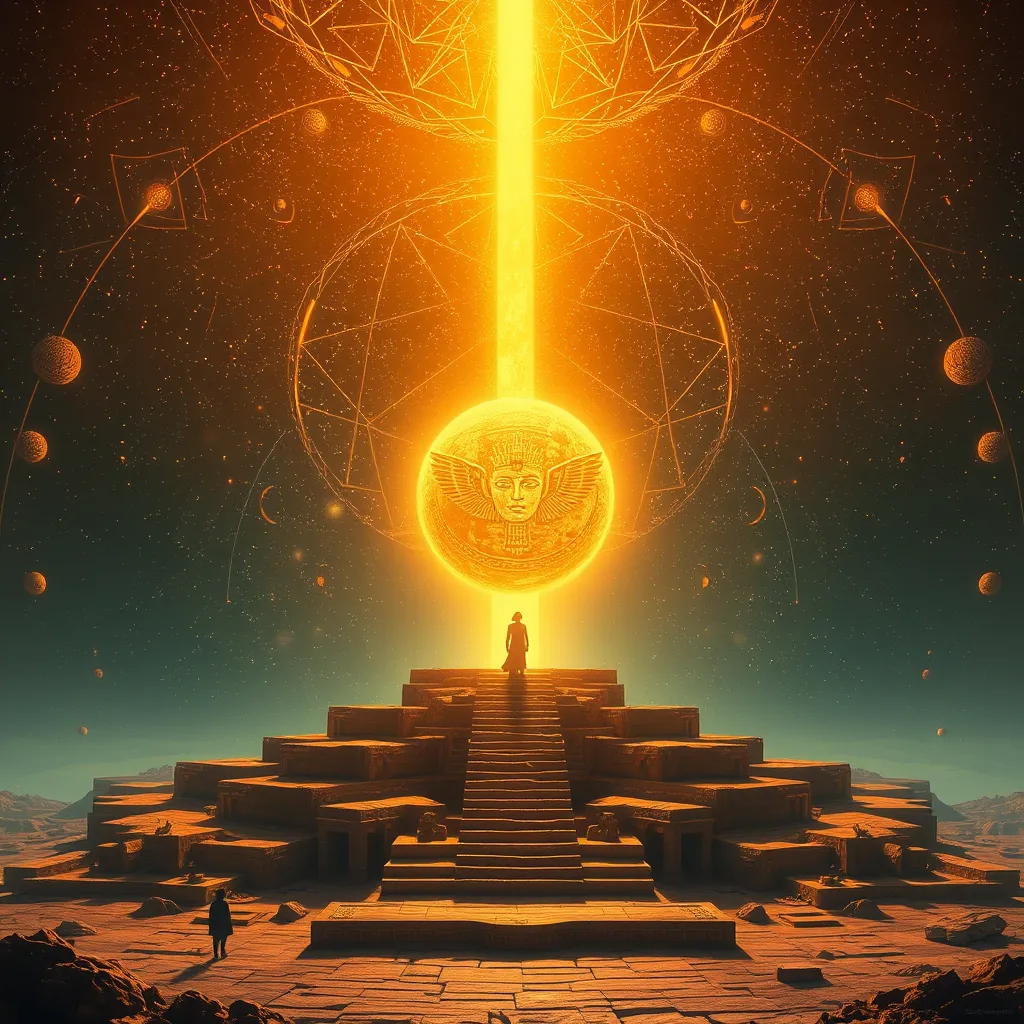The Duat: A Realm of Spiritual Journeys
I. Introduction to the Duat
The Duat, a term derived from ancient Egyptian mythology, represents the realm of the afterlife. It is a crucial component of the ancient Egyptians’ beliefs regarding death and the journey of the soul. Within the context of their religion, the Duat is not merely a destination; it is a complex landscape filled with trials, deities, and transformative experiences that souls must navigate after departing from the physical world.
Significantly, the Duat embodies the ancient Egyptians’ understanding of life, death, and the continuum that connects them. It serves as a metaphorical representation of what lies beyond the mortal existence, marking the transition from life to the eternal. In many ways, the Duat reflects the values, fears, and hopes of a civilization deeply enmeshed in spirituality and the afterlife.
II. Historical Context of the Duat
The concept of the Duat has its roots in the early stages of ancient Egyptian mythology, emerging around the time of the Old Kingdom (circa 2686–2181 BC). Initially, the Duat was viewed as a shadowy underworld where the dead resided, but over time, its interpretations evolved significantly.
As the ancient Egyptian civilization progressed through various dynasties, the understanding of the Duat became increasingly sophisticated:
- Old Kingdom: The Duat was primarily seen as a dark and ominous place inhabited by spirits and deities.
- Middle Kingdom: The Duat began to be depicted as a more structured realm, with descriptions of its geography and the importance of the afterlife journey.
- New Kingdom: The Duat was intricately described in funerary texts, showcasing a rich mythology surrounding the soul’s journey and the gods who assisted or hindered it.
III. The Structure of the Duat
The Duat is often described as a vast and elaborate realm, consisting of various regions, each with its own unique characteristics. It is depicted in tomb paintings and texts as a place of both peril and reward for the soul:
- Fields of Iaru: A paradise-like area where the souls of the righteous enjoy eternal bliss.
- Lake of Fire: A treacherous region where the souls of the wicked face punishment.
- Hall of Judgment: The central area where the “Weighing of the Heart” ceremony takes place.
The gods and goddesses play pivotal roles within the Duat. Key deities include:
- Osiris: The god of the afterlife and resurrection, presiding over the judgment of souls.
- Isis: A protective goddess who aids the deceased in their journey.
- Anubis: The god of mummification and the protector of graves, guiding souls through the Duat.
IV. Spiritual Journeys in the Duat
Upon death, the soul embarks on a perilous journey through the Duat. This journey is fraught with challenges, including encounters with dangerous creatures and the need to navigate various obstacles. The ultimate goal is to reach the Hall of Judgment, where the soul will undergo the “Weighing of the Heart” ceremony.
The “Weighing of the Heart” is a critical moment in the soul’s journey. In this ceremony:
- The heart of the deceased is placed on one side of a scale.
- On the opposite side, a feather representing Ma’at, the goddess of truth and justice, is placed.
- If the heart is lighter than the feather, the soul is deemed worthy and granted passage to the Fields of Iaru.
- If heavier, the soul is devoured by Ammit, the soul-eating demon, leading to eternal oblivion.
V. Symbols and Artifacts Associated with the Duat
Numerous symbols and artifacts are associated with the Duat, each carrying significant meaning:
- The Ankh: Symbolizing life and immortality, often found in the hands of deities.
- The Scarab: Representing rebirth, it signifies the soul’s journey through the afterlife.
- Hieroglyphs: Written symbols that convey important prayers and spells for the deceased.
Artifacts discovered in tombs provide insight into the ancient Egyptians’ beliefs about the Duat. Items such as:
- Funerary texts detailing the journey through the Duat.
- Amulets designed to protect the soul during its journey.
- Intricate paintings depicting scenes from the Duat.
VI. The Duat in Ancient Egyptian Literature
Literature plays a crucial role in shaping our understanding of the Duat. The Book of the Dead is one of the most significant texts, serving as a guide for the deceased navigating the afterlife. It contains spells, prayers, and instructions to help the soul confront the challenges of the Duat.
Additionally, various myths illustrate the journey through the Duat, often highlighting themes of resurrection, judgment, and transformation. These narratives not only provided comfort to the living but also reinforced the moral codes of ancient Egyptian society.
VII. Modern Interpretations and Relevance of the Duat
In contemporary society, the Duat continues to inspire spiritual practices and beliefs. Many modern spiritual movements draw upon ancient Egyptian concepts of the afterlife, emphasizing the importance of personal growth, accountability, and the journey of the soul.
The Duat’s influence extends into modern literature and pop culture as well. It has appeared in:
- Books exploring themes of life after death.
- Films and television series featuring mythological elements.
- Games that incorporate Egyptian mythology and its rich lore.
VIII. Conclusion
In summary, the Duat holds immense significance in the context of ancient Egyptian spirituality and beliefs about the afterlife. It represents not only a realm where souls journey after death but also a complex tapestry of morality, judgment, and transformation.
The enduring legacy of the Duat continues to resonate in contemporary discussions surrounding life, death, and the afterlife, reminding us of the profound questions that humanity has sought to answer throughout history. Understanding the Duat allows us to reflect on our own beliefs and the spiritual journeys we undertake in life.




